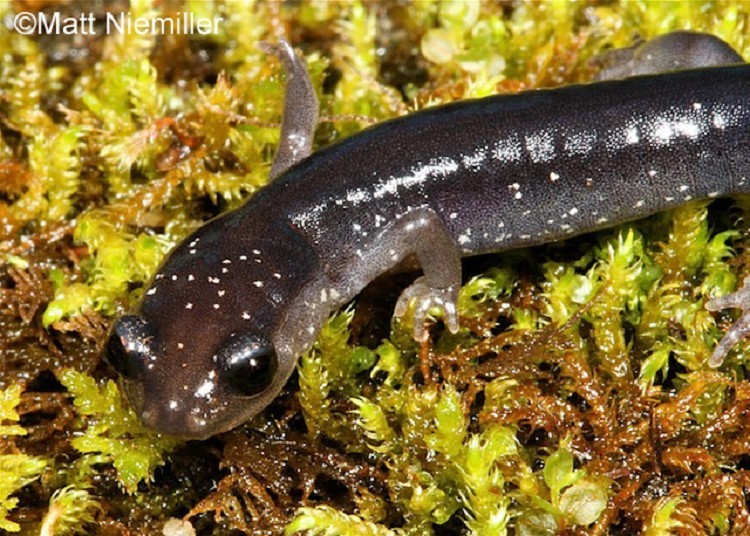Southern Appalachian Salamander
Plethodon teyahaleeThe Southern Appalachian salamander occurs in the Unicoi and Great Smoky Mountains of east TN. Very similar to and known to hybridize with, Red-cheeked and Northern Slimy Salamanders.
Description: A large, black salamander (4.75 to 6.75 inches in length) with scattered small white spots on the dorsum. White spots on the sides are larger than on the back. Small red spots may occur on the legs. Chin is lighter than the slate gray belly.
Similar Species:
- Red-cheeked Salamander lacks white spots on the back.
- Northern Slimy Salamander has more, and larger, white spots on the back and sides.
- Tellico Salamander is smaller and has brass-colored spots on the back.
Habitat: Found under rocks, logs, and leaf litter in moist forested woodlands, especially mountain valleys.
Diet: Variety of invertebrates: millipedes, beetles, ants, flies, snails, and moth larvae.
Breeding information: Little is known. Like other Plethodon species it most likely breeds in late summer to fall and deposits eggs underground the following spring or summer. Females probably brood clutch of eggs until juveniles hatch.
Status in Tennessee: With much of the population on protected federal or state lands, this species’ population appears to be stable. However, it is vulnerable to clear-cutting timber operations.
Fun Facts:
- Name teyahalee comes from a bald on Snowbird Mountain, NC where the first specimen was described.
- Likes to shelter in “retreat holes” in the day, from which it emerges at night to forage on the forest floor.
Best places to see in Tennessee: Mountain valleys of the Great Smoky Mountains National Park.
